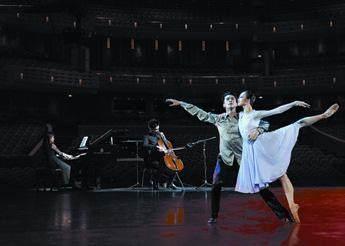A Transboundary Trial
By Tao Xing
Inspiration arose when a mutual friend of Wu Husheng and Zhang Ting proposed the idea and introduced them to each other. After Wu got in touch with Zhang, they immediately clicked and started devising the creation of A Dream of a Floating Life.
Chinas Kunqu Opera and the art that is ballet performing together on the same stage? A feat perhaps far-fetched before, yet, as the world rests on the cusp of change, no longer beyond realization. One might be curious as to what the combination of the two arts, opera and dance, East and West, looks like. A Dream of a Floating Life will provide the answer to that question.
Wu, principal dancer with the Shanghai Ballet, together with Zhang, an actress from the Shanghai Kunqu Opera Troupe, brought the transboundary work to the stage of the National Center for the Performing Arts of China in Beijing this March.
A love story
A Dream of a Floating Life is based on The Peony Pavilion, a masterpiece by Tang Xianzu, considered the greatest playwright of the Ming Dynasty(1368-1644). It is also a classic composition in the Kunqu Opera genre, telling a love story that moves against the constraints of tradition.
A Stroll in the Garden and An Interrupted Dream are arguably the most brilliant and representative chapters in The Peony Pavilion. They describe a beautiful young noble lady named Du Liniang who was strictly educated at home and could not set foot outside her chambers without her parents permission. One day, Du ventures into the garden with her companion and, suddenly struck by the beauty of nature, experiences the intense joys, as well as pains, of life.
Tired from the stroll in the garden, Du falls asleep and dreams that she encounters a young scholar named Liu Mengmei with whom she then shares an intimate moment under a plum tree. Awakened from the dream by her mother, Du feels that her real life is aimless and confined.

The latter parts describe Dus death, how she wastes away overwhelmed by a sense of lovesickness for her dream lover, and how she haunts Liu until he promises to exhume her. Du is subsequently brought back to life and joined in marriage with Liu. They live happily ever after.
Wu chose the first part as the foundation of his dance drama. However, he made some changes. A modern man meets an ancient woman in the dream. And he uses ballet and Kunqu Opera to describe the story.

